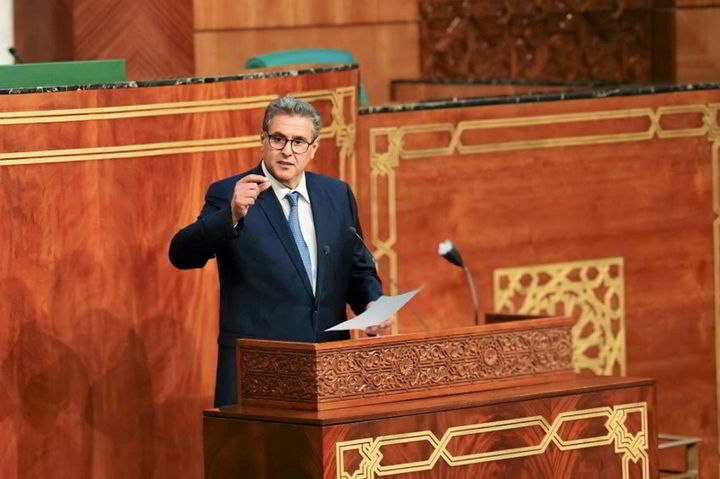Morocco promises a million hectares of land for green hydrogen project development

Morocco will allocate up to a million hectares (10,000 square kilometres) of land for green hydrogen projects as part of its “Hydrogen Offer” to investors, according to the office of Prime Minister Aziz Akhannouch, in a statement providing the first details of the long-awaited policy.
The government plans to initially award 3,000 square kilometres to developers, subdivided into lots of between 100 and 300 square kilometres.
By comparison, Oman — another country seeking to establish itself as a green hydrogen exporter — has allocated 50,000 square kilometres in total for H2 project development. Blocks of Omani land awarded to date have ranged from around 100 to 300 square kilometres in size, each siting projects expected to produce hundreds of thousands of tonnes of green hydrogen.
However, further details of how the Moroccan government will award land to developers and extra incentives under the support scheme have yet to be published.
Morocco itself is generally recognised to have more than 446,000 square kilometres of land (excluding Western Sahara, which itself totals 266,000 square kilometres), meaning that the country is effectively offering up around 2% of its land mass to green H2 producers as part of the Hydrogen Offer.
Total Eren, now fully owned by TotalEnergies, in 2022 reportedly secured 1,700 square kilometres in the Guelmim-Oued Noun administrative region from the Moroccan government for a 100-billion-dirham ($9.9bn) green hydrogen project drawing on 10GW of wind and solar energy.
Article continues below the advert
The government notes in its press release that “nearly a hundred” investors, both domestic and international, have already expressed interest in developing green hydrogen or its derivatives in Morocco.
The North African country has often been highlighted as a major potential exporter to the EU, since it can leverage strong wind and solar resource to produce cheap green hydrogen while still close enough to Europe to export the gas via pipeline, generally considered a cheaper way to export molecules than shipping H2 or its derivatives.
Morocco’s hydrogen strategy anticipates 4TWh (around 121,000 tonnes) a year of domestic demand, such as from state-owned fertiliser producer OCP, and a 10TWh (around 303,000 tonnes) a year export market by 2030.
The EU has already set a target of 10 million tonnes of imported H2 by that year. Meanwhile, the €270m ($295m) PtX fund, backed by Germany’s Federal Ministry for Economic Cooperation and Development with an eye toward funding green hydrogen projects that export to the EU, has included Morocco as one of the seven eligible countries in its first call for interest.




